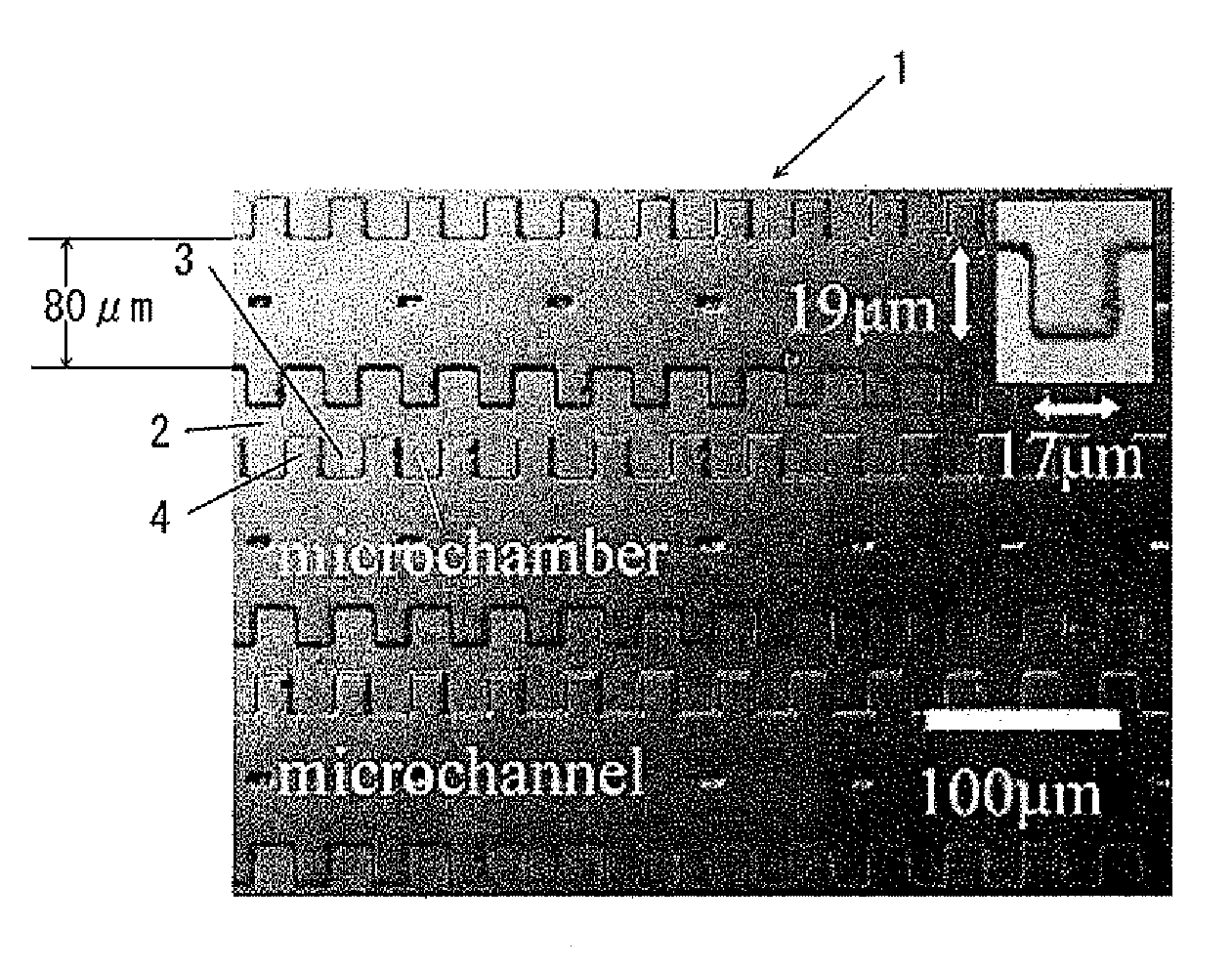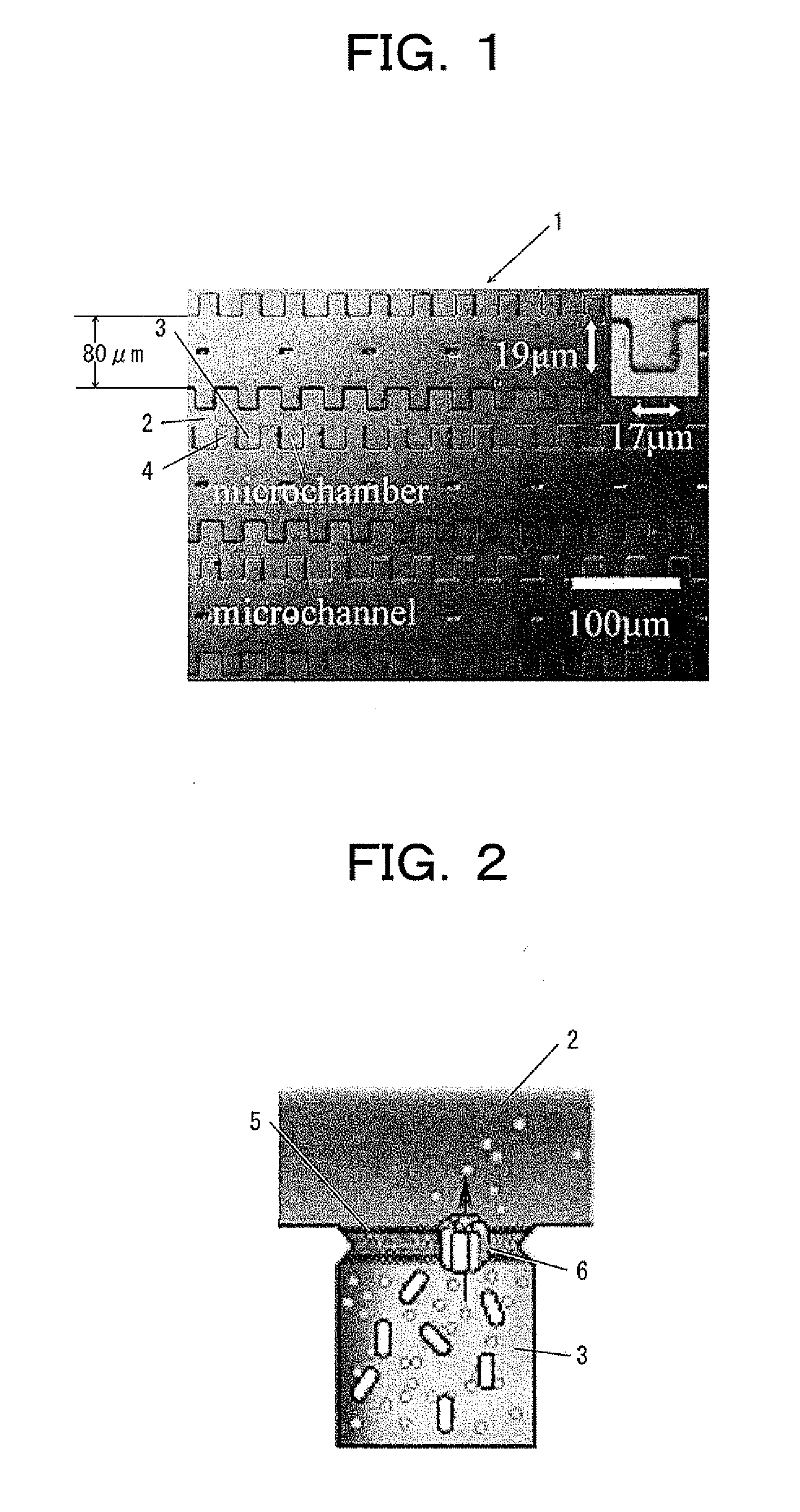Planar lipid bilayer array formed by microfluidic technique and method of analysis using planar lipid bilayer
- Summary
- Abstract
- Description
- Claims
- Application Information
AI Technical Summary
Benefits of technology
Problems solved by technology
Method used
Image
Examples
embodiments
[0040]Hereinbelow, embodiments of the present invention will be described in detail.
[0041]FIG. 1 is a conceptual diagram of microchannels having microchambers of a PDMS device illustrating an embodiment of the present invention. FIG. 2 is a diagram showing the microchamber sealed with a planar lipid bilayer.
[0042]In these figures, reference numeral 1 denotes a PDMS (Polydimethylsiloxane) device, 2 denotes a microchannel formed in the PDMS device 1, and 3 denotes a microchamber having an aperture alternately arranged on both sides of the microchannel 2. Although the both sides of the microchannel 2 are exemplified as side walls of the microchannel herein, the both sides of the microchannel 2 may refer to top and bottom walls of the microchannel. Here, each microchannel 2 is 7 μm in height, and the size of each microchamber 3 is 17 μm in width and 19 μm in height, for example.
[0043]Here, although the smaller membrane area of a planar lipid bilayer 5 formed on the aperture of the micro...
PUM
 Login to View More
Login to View More Abstract
Description
Claims
Application Information
 Login to View More
Login to View More - R&D
- Intellectual Property
- Life Sciences
- Materials
- Tech Scout
- Unparalleled Data Quality
- Higher Quality Content
- 60% Fewer Hallucinations
Browse by: Latest US Patents, China's latest patents, Technical Efficacy Thesaurus, Application Domain, Technology Topic, Popular Technical Reports.
© 2025 PatSnap. All rights reserved.Legal|Privacy policy|Modern Slavery Act Transparency Statement|Sitemap|About US| Contact US: help@patsnap.com



